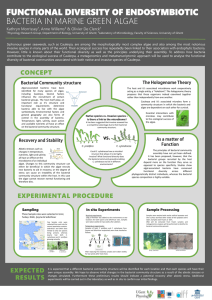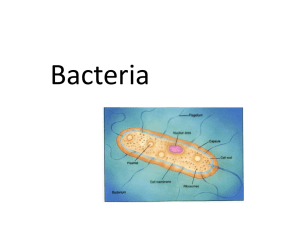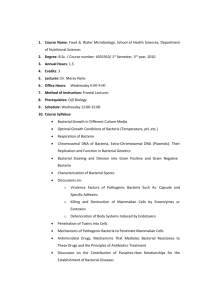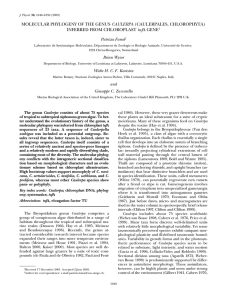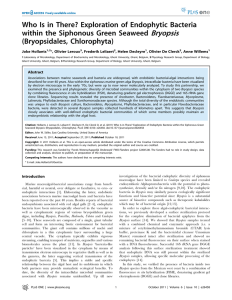Functional diversity of endosymbiotic bacterial communities in marine green algae
advertisement
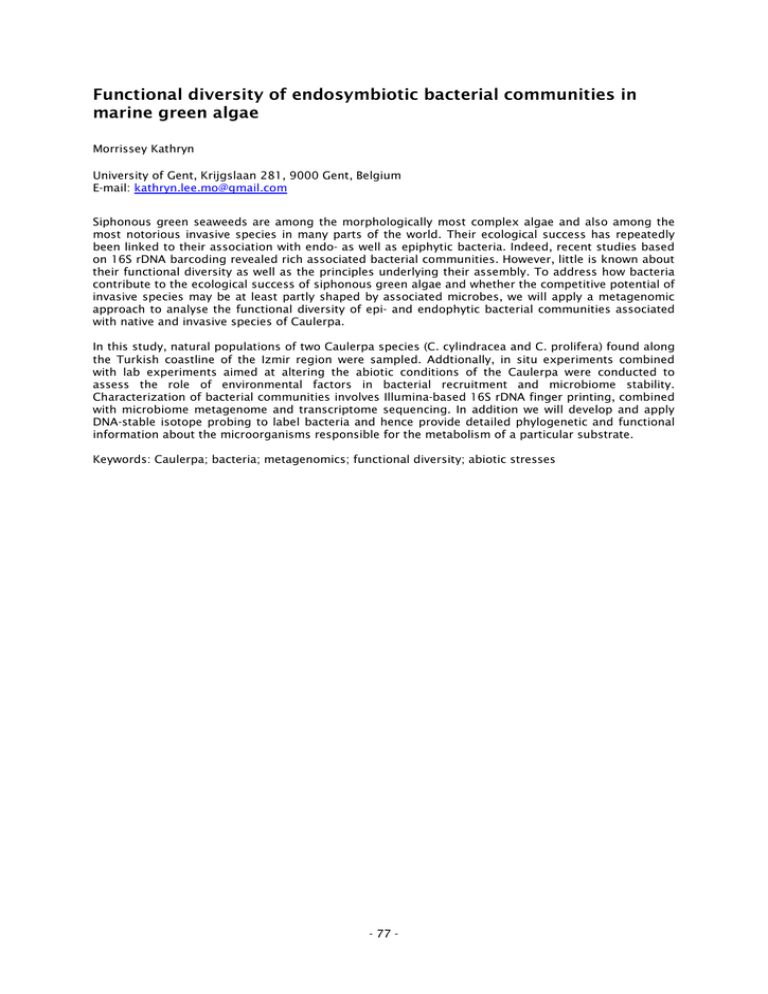
Functional diversity of endosymbiotic bacterial communities in marine green algae Morrissey Kathryn University of Gent, Krijgslaan 281, 9000 Gent, Belgium E-mail: kathryn.lee.mo@gmail.com Siphonous green seaweeds are among the morphologically most complex algae and also among the most notorious invasive species in many parts of the world. Their ecological success has repeatedly been linked to their association with endo- as well as epiphytic bacteria. Indeed, recent studies based on 16S rDNA barcoding revealed rich associated bacterial communities. However, little is known about their functional diversity as well as the principles underlying their assembly. To address how bacteria contribute to the ecological success of siphonous green algae and whether the competitive potential of invasive species may be at least partly shaped by associated microbes, we will apply a metagenomic approach to analyse the functional diversity of epi- and endophytic bacterial communities associated with native and invasive species of Caulerpa. In this study, natural populations of two Caulerpa species (C. cylindracea and C. prolifera) found along the Turkish coastline of the Izmir region were sampled. Addtionally, in situ experiments combined with lab experiments aimed at altering the abiotic conditions of the Caulerpa were conducted to assess the role of environmental factors in bacterial recruitment and microbiome stability. Characterization of bacterial communities involves Illumina-based 16S rDNA finger printing, combined with microbiome metagenome and transcriptome sequencing. In addition we will develop and apply DNA-stable isotope probing to label bacteria and hence provide detailed phylogenetic and functional information about the microorganisms responsible for the metabolism of a particular substrate. Keywords: Caulerpa; bacteria; metagenomics; functional diversity; abiotic stresses - 77 -
